Teams in the German Bundesliga have developed a reputation for strong recruitment over the last decade or so.
It is not uncommon for German sides to announce transfers early, well before the move will become official, as they get their business done extremely efficiently.
There are trends in the recruitment of Bundesliga sides that are evident from just a cursory glance through their signings.
They prefer younger players with room for continued development, and they are not afraid to access markets that other European leagues do not tend to shop in.
This is particularly true when looking at how many sides in Germany have accessed the Japanese market in recent years.
This is likely driven by the success that Borussia Dortmund found in that market when they signed Shinji Kagawa from the second tier of Japanese football.
While Kagawa did leave Germany eventually, when he departed for Manchester United, he would then return to remain an important part of the Dortmund machine later in his career.
One of the most interesting and exciting Japanese imports in German football in recent years is the 25-year-old attacking midfielder Daichi Kamada of Eintracht Frankfurt.
Kamada signed for the Japanese side Sagan Tosu straight out of high school and he was long lauded as one of the best prospects in Japanese football from an early age.
In 2017, Eintracht Frankfurt made their move with a deal reported to be in the region of £1.5M.
Crucially, however, the German side did not look to make an immediate return on their investment and instead they sent the youngster out on loan to Belgium with Sint-Truiden.
In Belgium, we saw Kamada explode as he scored fifteen goals and registered 5 assists in the 2018/19 season.
That impressive form saw him recalled at the end of the season.
From that point on, Kamada has been a regular member of the first team at Frankfurt — but what makes him such an impressive attacking player?
Daichi Kamada Player Profile & Style Of Play
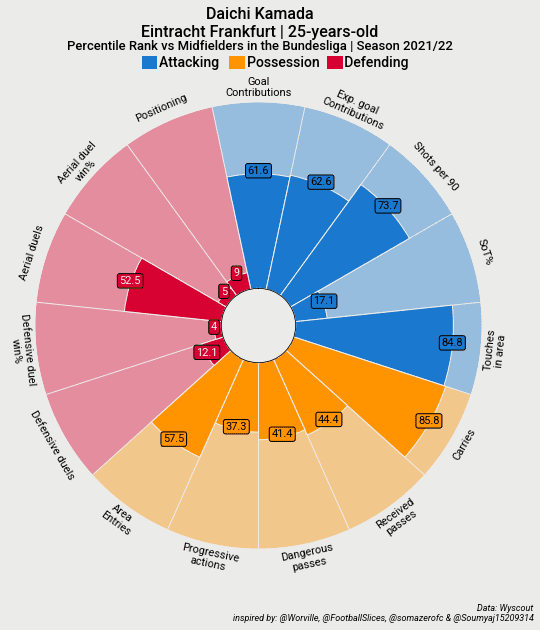
This pizza chart gives us a breakdown of Kamada’s performance so far this season across three main areas, defending, possession and attacking, and from this, we can start to build a picture of his areas of strengths.
As you can see, in the attacking section, Kamada is above average (average is the 50th percentile) for goal contributions per 90 (goals and assists) expected goal contributions per 90 (xG and xA), shots per 90 and touches in the area per 90.
He is an advanced midfielder who likes to attack space and make aggressive runs to find pockets around or in the opposition penalty area.
In the possession section, he is above average for carries and area entries as he poses a threat in the final third to either drive aggressively into the penalty area or to find an incisive passing angle to break into the penalty area and break the defensive line.
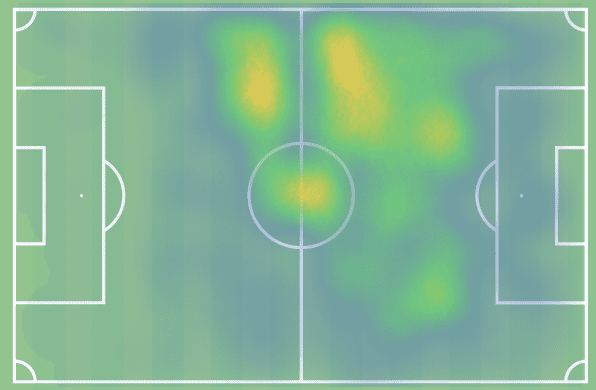
His heatmap for this season clearly shows us that Kamada prefers to operate from the half-space on the left-hand side of the pitch.
From these areas, he can drift inside or even into the wide areas depending on where he can find the most space to occupy and move the ball into dangerous areas.
Daichi Kamada Chance Creation
When in possession in the final third, the easiest way to describe the effect that Kamada has on opposition teams is actually through a basketball term: gravity — this describes the extent to which the attacking threat of a player draws defenders towards him and therefore creates space for teammates.
This extends to when the player is in possession and when he is out of possession.
In the case of Kamada, his gravity is more pronounced when in possession of the ball as a result of his close control and press resistance.
He has the ability to take possession of the ball in advanced areas and then engage and beat one or two defenders one after another.
He is a very balanced player who is difficult to challenge effectively because he can go inside and outside a defender and shift his weight to move through a challenge at ease.
These abilities mean that he is a huge threat in the penalty area and his ability to play in tight areas, under pressure, with his head up means that he can make the right decision as often as possible.
This sees him find creative passing options in the final third to create chances for teammates.
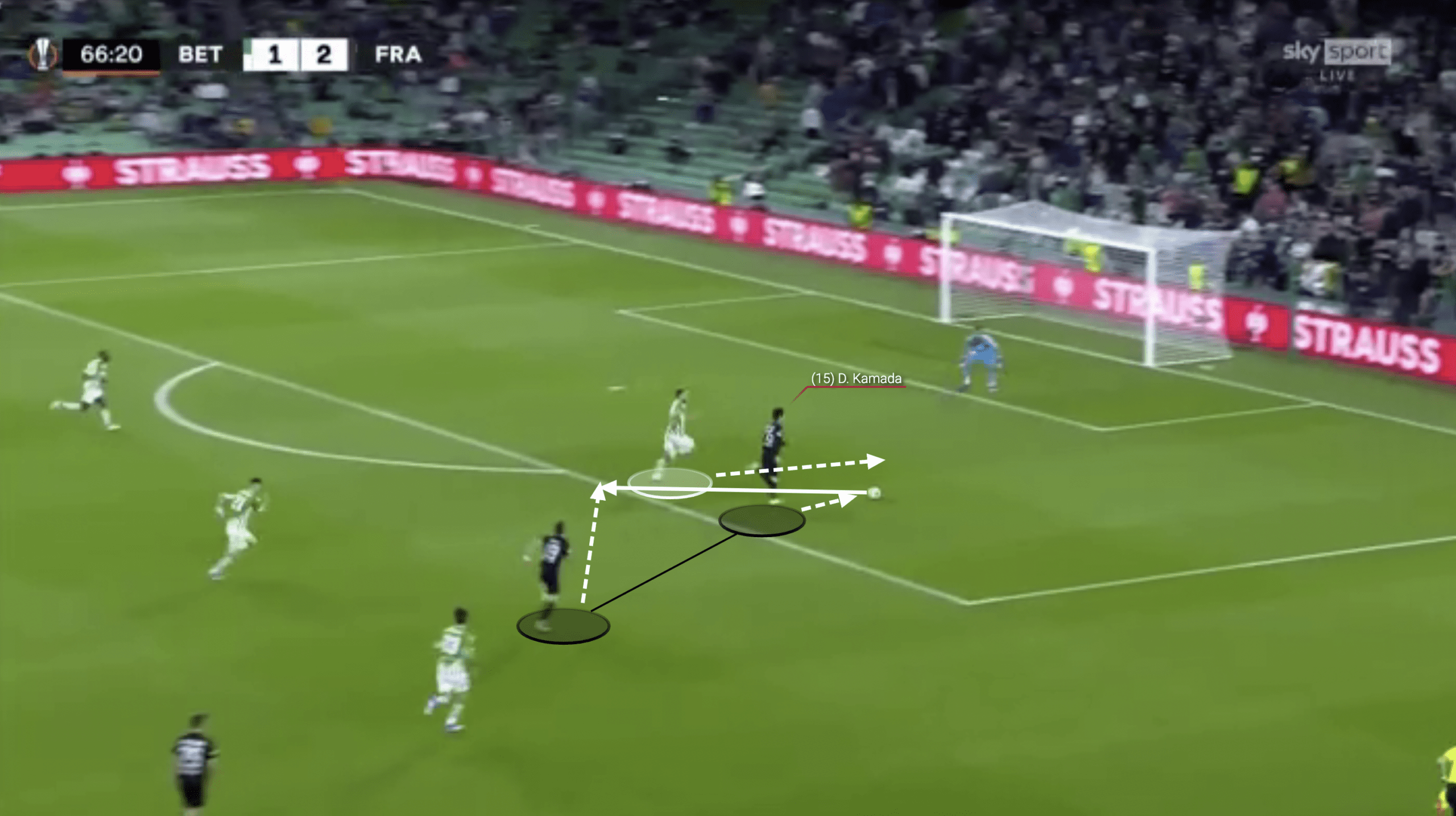
We see an example of this here as Kamada has actually broken the line with an off-the-ball run in the first instance as he gets out and ahead of the striker.
He is able to collect a direct ball and he is breaking into the penalty area 1v1 against a defender, although he is moving away from goal.
From this position, we would generally expect an attacking player to look for opportunities to either strike with his right foot or to cut back inside to look for a better angle on his left.
Instead, we see Kamada display his incredible awareness as he allows the defender to get tighter before flicking the ball back with his heel with great deception to access the run of his teammate who is moving at an angle into the penalty area.
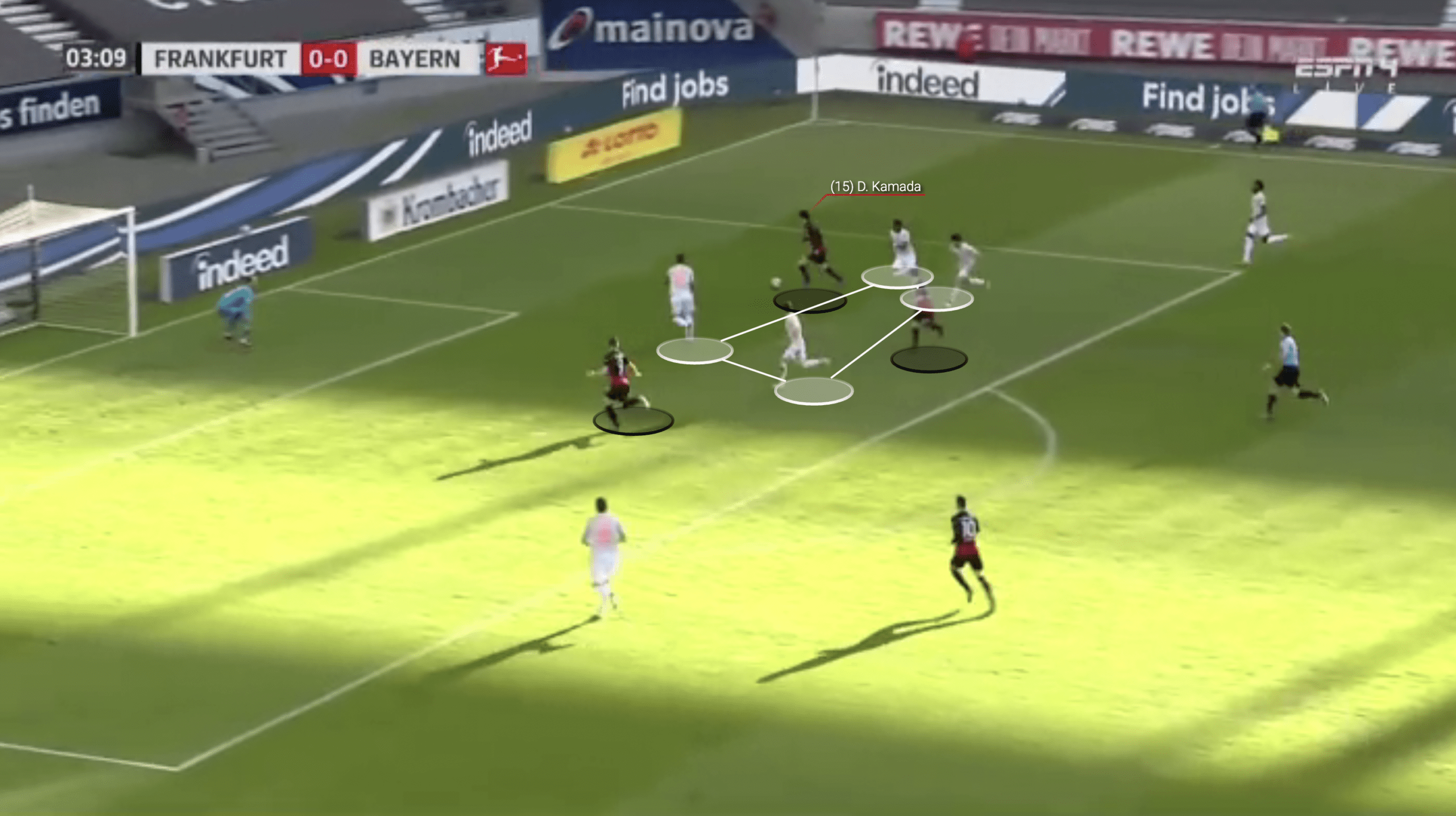
This time, we see Kamada moving in the opposition area through traffic as four Bayern Munich players are tracking his run and looking to prevent him from finding a path through on goal.
This is where we see how effectively Kamada plays with his head up as the path to goal is cut off and the passing lane across to the far post is blocked.
He has great deception when moving to strike the ball and he feints to play a driven cross before cutting the space back towards the player just inside the edge of the area.
Daichi Kamada Ball Progression
While chance creation in the final third and the penalty area is a huge part of Kamada’s game, he also has the ability to progress the ball dangerously through the thirds of the field.
His ability to find pockets of space in which to receive the ball means that he is generally able to take the ball on the half-turn before taking a positive touch and playing forward into dangerous areas.
If he is pressed aggressively and prevented from turning, then we see his technical ability come to the fore as he is comfortable receiving under pressure and playing on one or two touches in order to link the play.
This ability to receive and then turn to progress the ball is especially important for Frankfurt in moments of transition as his calmness on the ball and tendency to play with his head up means that he can receive when counter pressed before outplaying a defender and finding space to drive into or play the ball through in to.

Here, we see a situation with Frankfurt in transition.
Daichi Kamada has picked up the ball on the right-hand side, he does not typically limit his positioning in moments of transition, and he is driving forward in the half-space.
At this point, even in transition, it is clear that Union Berlin still have a positive defensive shape with four defenders recovering into good defensive positions and two more supporting from behind.
This is where vision and progressive passing ability from Kamada come into play.
He has the vision and technical ability to weight his pass into a position in which only the attacking player can get it.
He bends the ball around the defenders and out of reach of the goalkeeper for an easy finish.
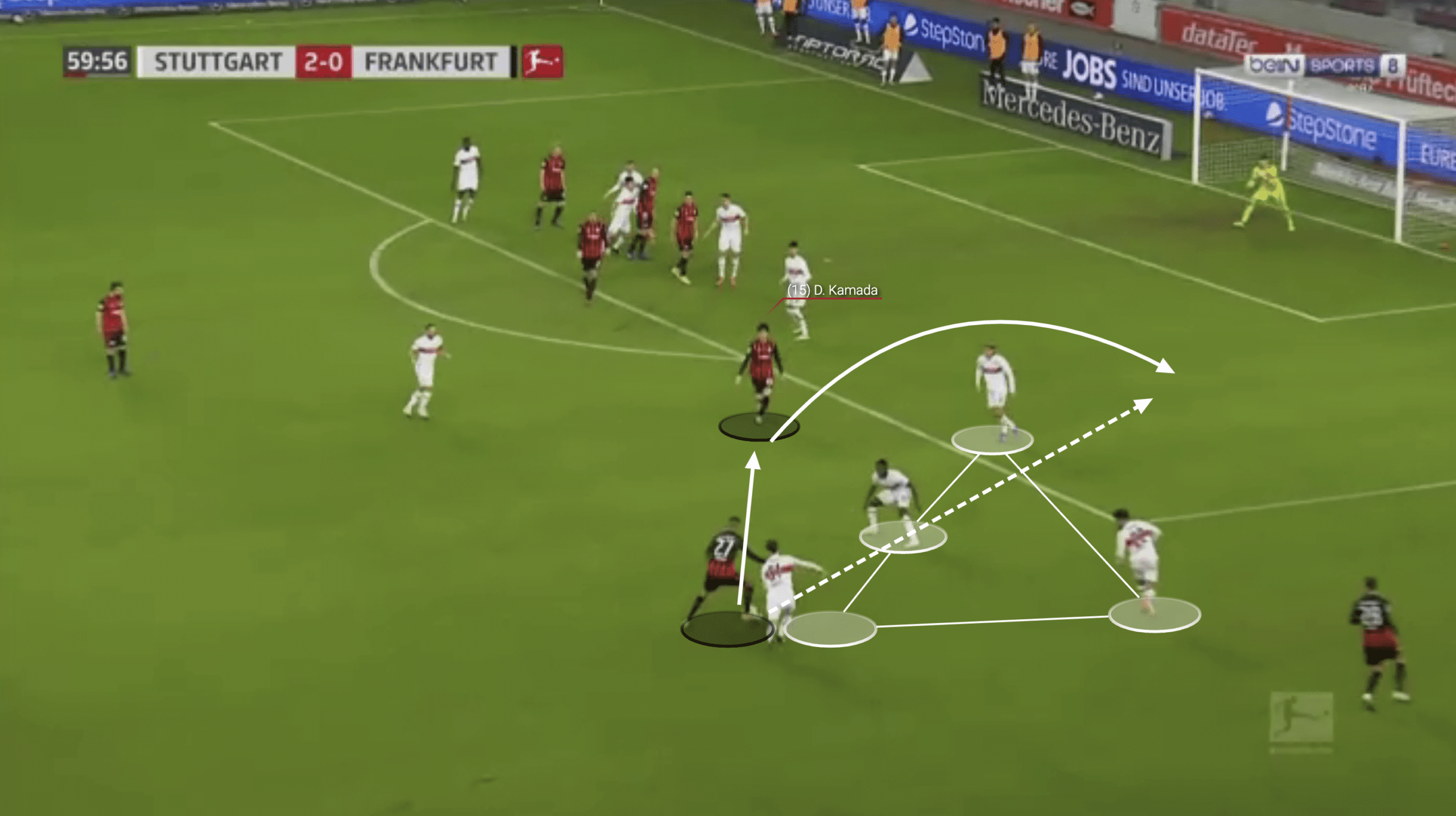
Here, we again see his vision and ability to link the play as Kamada comes deeper to link with the player in the half-space.
As he receives the pass into his feet, he has the level of quality from a technical perspective to play one-touch and drop the ball over the head of the defensive line.
Once again, the key is that he plays the pass with trajectory and weight to drop behind the defensive line for his teammate to run onto the ball.
Daichi Kamada Engaging Defenders 1v1
A large part of the danger that Daichi Kamada provides for his team comes in his ability to engage a defender and beat them in 1v1 situations.
His ball manipulation is, from a technical perspective, first-rate and when combined with his balance and agility he becomes difficult to defend against given his ability to quickly stop and change direction when moving and attacking in space.
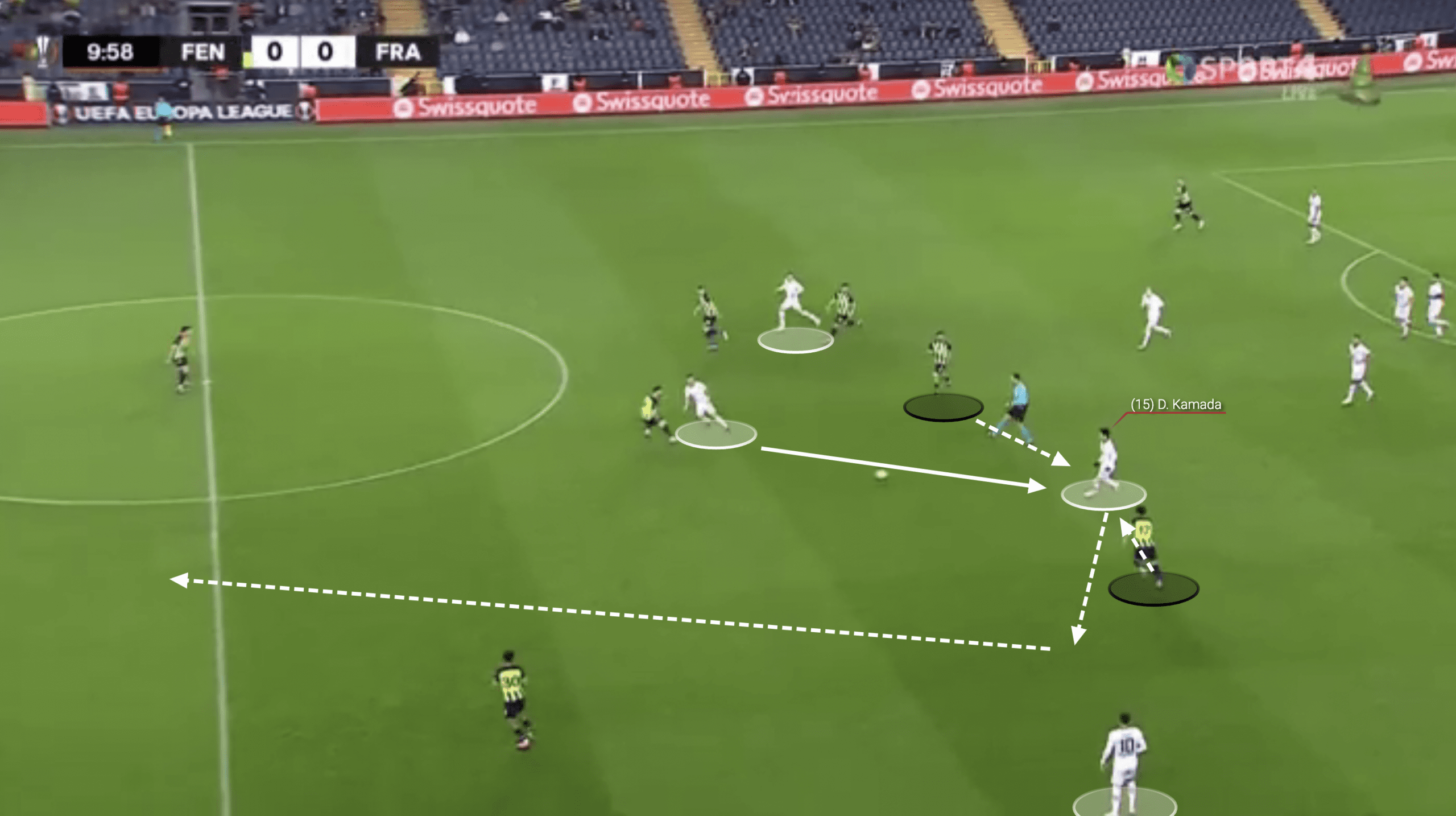
We see this ability in this example as he displays his vision and game awareness before escaping and driving forward into space.
The image has been captured at a moment of transition from defence to attack with the ball having been played to the highest line in the first instance.
As the ball is played back to Kamada two opposing players move in to apply pressure.
Without seeming to move, however, Kamada flicks his first touch through the legs of the near side defender as he closes on the ball.
At that point, with the defensive player beaten and off-balance, the Japanese international drives into the left half-space and progresses his side forward.
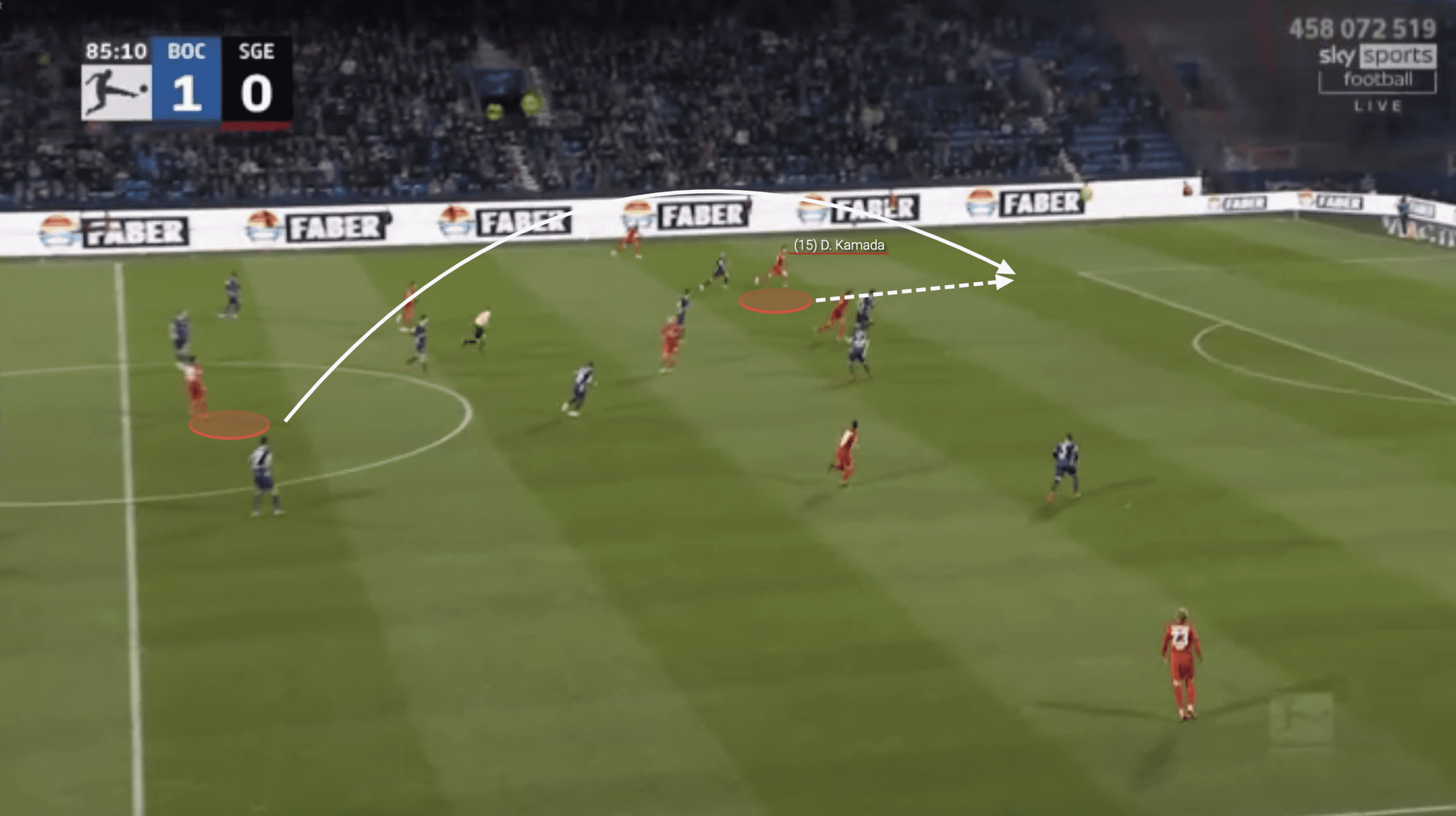
This time we see the kind of positions that Kamada will try to access when possible before driving into the penalty area and committing defensive players.
He is positioned, once again, in the half-space on the left side of the pitch.
The defensive player has the time and quality to find his run with a direct pass over the top into space and Kamada is able to take the ball on the run.
From these positions, his balance and ability in possession of the ball allow him to cut inside, engage and unbalance opposition defenders.
In this situation, he cut back inside on his right-hand side and shot with his right foot across goal.
Conclusion
Daichi Kamada is now 25 years old, and he has been regularly linked with a move away from Frankfurt for the last two transfer windows with sides in Germany and Italy, in particular, credited with interest.
While he is comfortable at Frankfurt, there is a sense that in order to get the most out of his talent, he needs to be playing in an environment that allows him to compete and challenge for honours.
I would not be surprised to see him move on from the German side this coming summer.

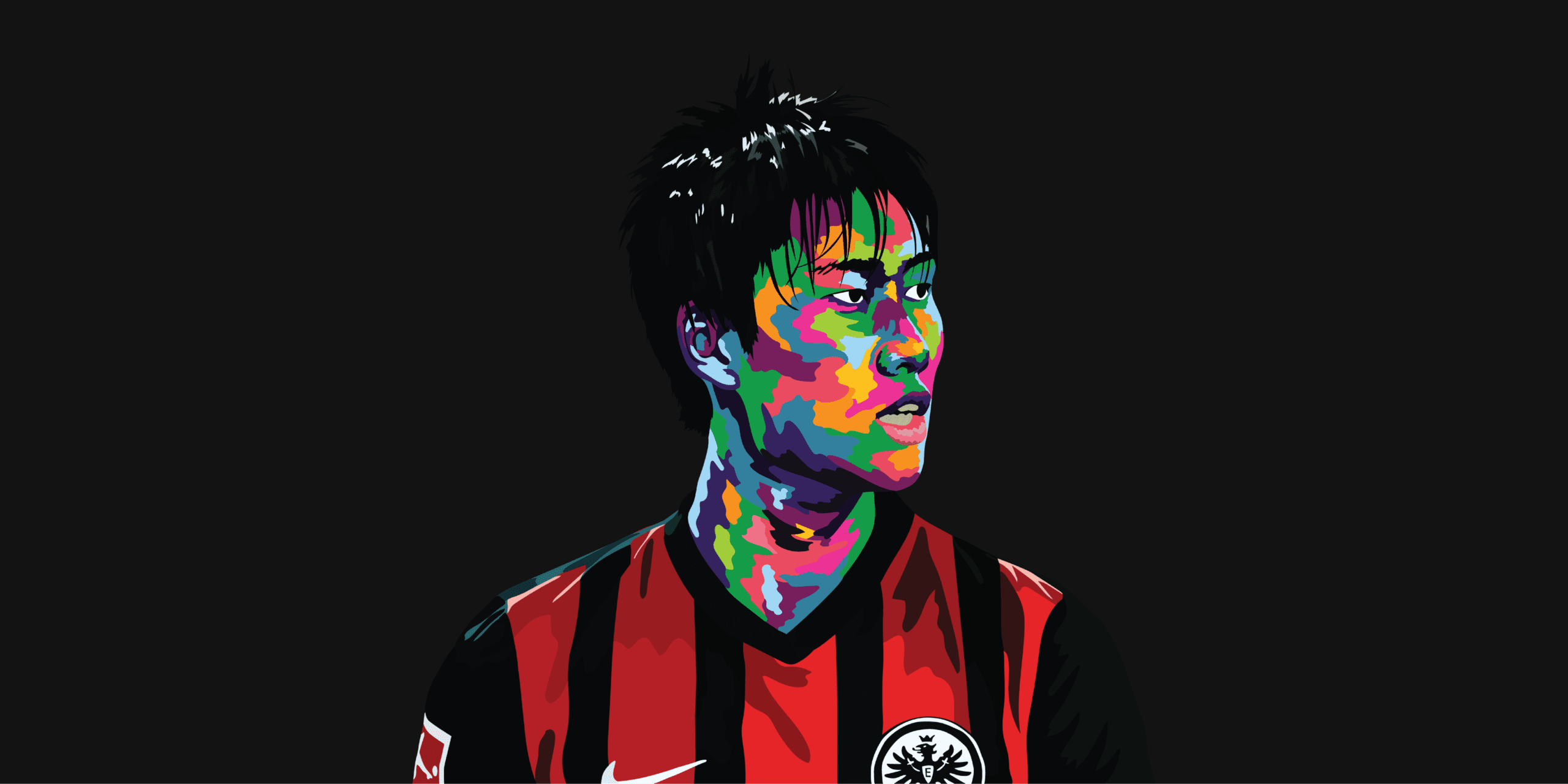




Comments